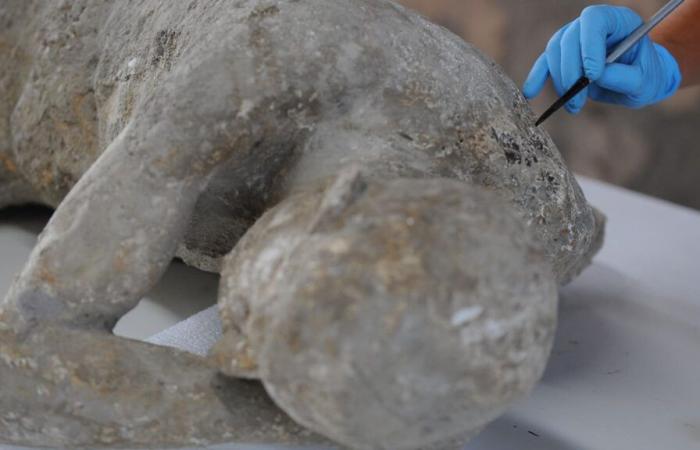Researchers have studied the DNA of victims of the Vesuvius eruption, calling into question all traditional beliefs about the ancient city of Pompeii.
Historical certainties shaken up. A team of American researchers reveal the results of their study on the famous victims of Pompeii. Published in the scientific journal Current Biology on November 7, their work calls into question historical certainties about the identity and relationships of the inhabitants of the city, killed in the eruption of Vesuvius in 79 AD.
Thanks to DNA analyzes carried out on the skeletal remains present in the plaster casts made at Pompeii, scientists were able to “characterize the genetic relationships, sex, ancestry and mobility of five individuals.”
These are the most famous casts of the ancient ancient city. What was thought to be a mother holding her child on one hip is in fact “genetically an adult male biologically unrelated to the child,” according to the study.
“We expect a woman to be comforting and maternal, so much so that we assume that a comforting figure is a wife and a mother, which is not the case here,” analyzes Steven Tuck, professor of history and classics at Miami University in Ohio, interviewed by CNN.
Likewise, two bodies, which must have been those of two sisters, of a mother and her daughter, or of lovers entwined, in fact contain a man.
Migrants from the eastern Mediterranean
In their study, the scientists also looked at the origins and movements of these Pompeii victims. And the result is also astonishing: the genomes of all the bodies studied “systematically trace their ancestry largely to recent immigrants from the eastern Mediterranean”, which, according to the researchers, underlines “the cosmopolitanism of the Roman Empire at that time.”
“This shows how little is known about these events,” emphasizes geneticist David Reich, a specialist in fossil DNA at Harvard University and co-author of this study.
“This new scientific tool reveals very different realities from the initial reconstructions. The past is an unknown territory and it sometimes reserves surprises. Sometimes, what we think we see does not correspond to reality,” adds the scientist.
1,000 victims discovered
Pompeii was a Roman city, completely buried under a deposit of lava particles (lapilli) of pumice, then ashes, after the eruption of the Vesuvius volcano in 79 AD. The city remained forgotten – and therefore preserved – until 1700, making it one of the most famous and fascinating archaeological sites in the world. And inevitably giving rise to a good number of fantasies and mysteries.
During excavations, over the centuries, 1,000 victims were discovered in the ruins of the city and 104 in plaster were made, preserving the shape of their bodies and containing bone fragments, studied by researchers ever since.
Lucie Valais Journalist BFMTV






